Windows 10 File History Backup, Everything You Should Know
Do you know there is a built-in backup tool in Windows 10? In this article, you can learn the Windows built-in backup program, File History. Also, you can learn a specific guide on how to perform a Windows 10 File History backup.
Introduction
Have you ever heard of File History? File History is the primary backup tool in Windows 10. It appeared initially in Windows 8. Despite the name, File History isn't just the way to restore previous versions of files. However, is Windows File History a good backup?
Is Windows File History A Good Backup?
Sure, it is. Users can use File History to back up specific files, including Documents, Pictures, Videos, Music, or offline OneDrive files. In addition, it allows you to perform a backup plan without installing any other third-party backup tool. Therefore, if users only want to back up basic files on Windows 10, File History is sure to be the best option.
How Does Windows 10 File History Backup Work?
File History Windows 10 is a simple way to back up files since it comes built-in to your device. File History takes snapshots of the files as you go and stores the files in a targeted location. Over time, File History will build up a library of the past versions of your files that you can quickly recover.
However, where can we find File History backups? Continue to read.
Where Will File History Save Files?
Windows will store File History backups in the "File History Backups" folder on the C drive if users don't choose a special backup location. Besides, users can determine other backup destinations such as a local drive, network drive, or external hard drive.
Besides, these links may be helpful if you have questions such as:
Here we have learned much about File History, but do you know how to perform a Windows 10 File History backup? Let's find an answer in the next part.
How to Perform Windows 10 File History Backup?
File History is an easy backup program built-in Windows 10. So how do we use File History to finish a backup plan? It can be tough if users don't know too much about it. But don't worry. This part gives a detailed guide on its use.
Now, let's see the specific steps of performing a Windows 10 File History backup.
Step 1. Click "Update & Security" and select "Backup Using File History".
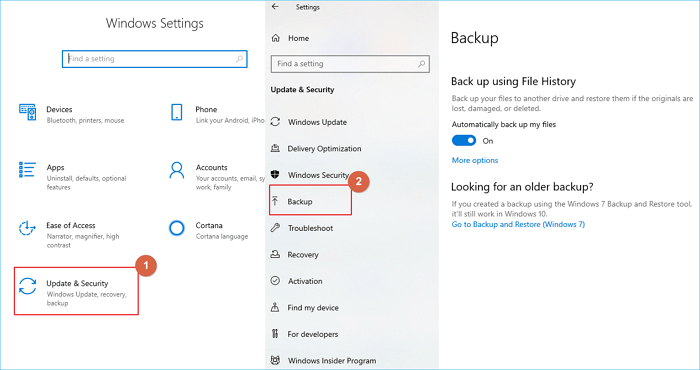
Step 2. Choose the content you want to back up.
Step 3. Choose a location for your backups. If you have more backup requirements, just click the "More option."
Step 4. Start to back up by clicking "Back up now".
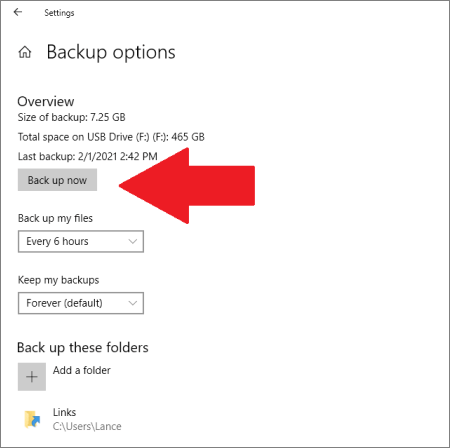
You see. File History allows us to perform Windows 10 File History backups. But after backing up, how can we restore File History?
How to Restore A Windows 10 File History Backups?
Do you know how we can restore files from Windows 10 File History? File History also provides options for users to restore files. In this part, you can learn a full guide on Windows 10 File History backup restore.
Now, let's see how to restore backups from File History.
Step 1. Click open File History and choose the "Restore personal files" option.
Step 2. In this window, choose the content you want to restore.
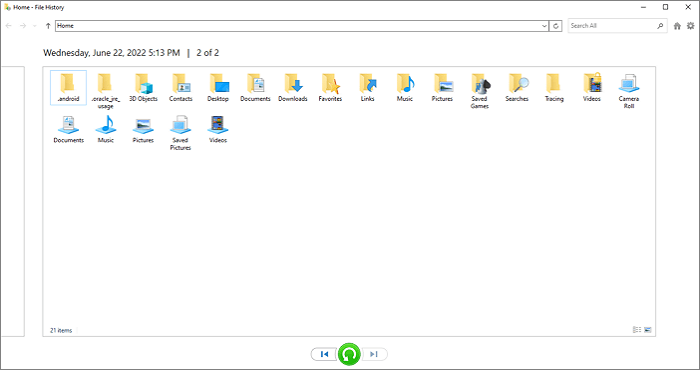
Step 3. Click this green button to restore and this step can restore your backups to the original position.
Step 4. If users want to restore the backups to a different location. Just click the "Restore to" option and choose a new location.

You see! File History can back up and restore files easily. But it also has some limitations. If you want to back up programs, settings, or a backup system, File History doesn't work. At this moment, you may like to know about a professional backup tool, Qiling Backup Home.
Try Windows 10 Backup Software to Replace Windows 10 File History Backup
How to back up files without using File History? It can be simple with the help of Qiling Backup Home. As a good alternative to Windows 10 File History backup, it allows users to back up data efficiently while keeping data safe. Meanwhile, it provides full, incremental, and deferential backup modes. It is easy to use and frees users out of hard backup steps.
Next, let's see how to back up files with Qiling Backup Home.
Step 1. For the first time you use Qiling Backup to back up files, click File backup on the home screen, where you can select pictures, videos, documents and all other types of files to back up.

Step 2. Follow the paths to locate the files, folders or directories you want to back up, select them all.
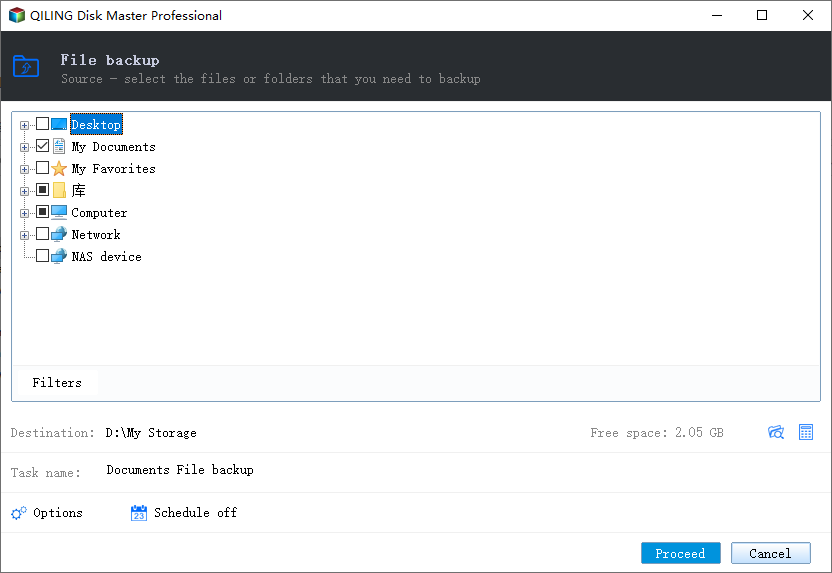
Step 3. Now you need to select a backup location to save and retain the backup.
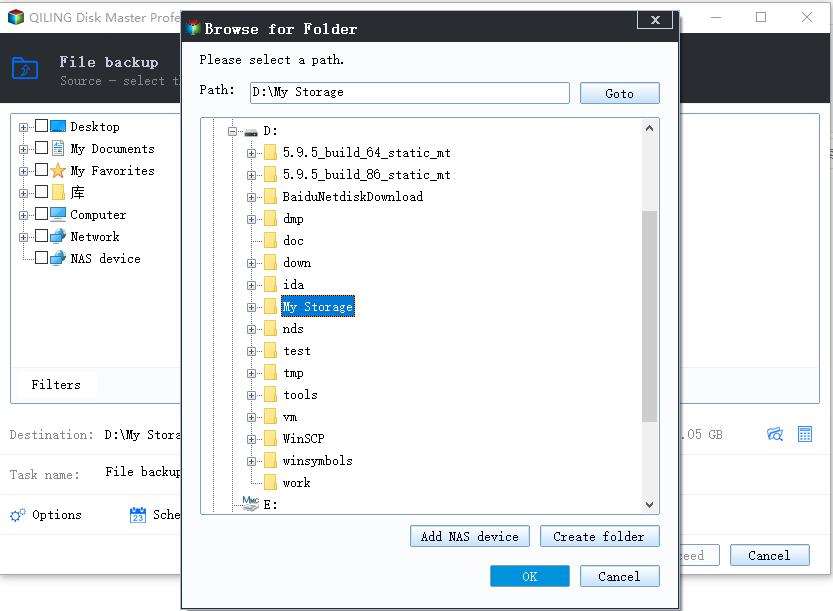
Step 4. Qiling Backup allows users to save the backup files to every device that is handy for you, like a local hard drive, external USB drive, SD card, network drive, or a NAS drive, plus a cloud drive of the Qiling brand. We personally recommend users to choose the cloud drive prior to a physical drive to save important backups due to the greater accessibility, flexibility and safety.
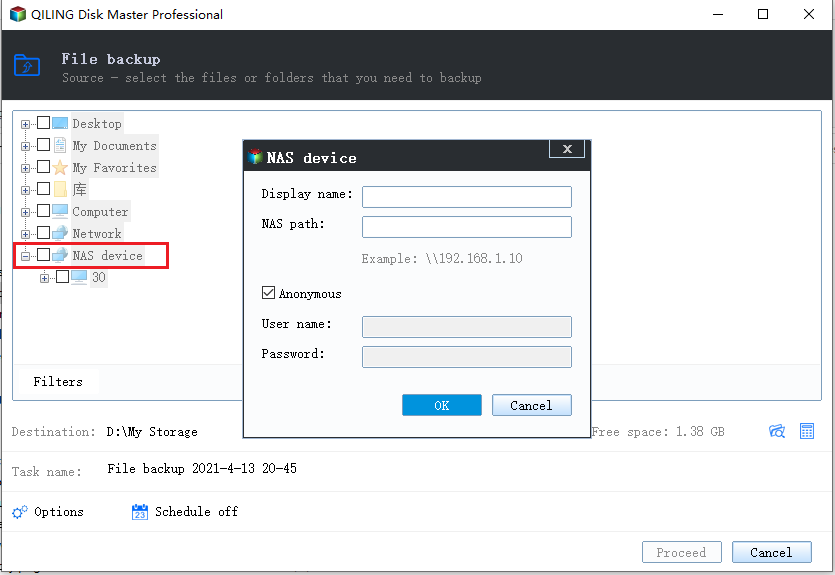
Step 5. If you're interested in an automatic and intelligent backup schedule for the next file backup task, go on with the "Options" setting. There you can encrypt a confidential file backup, compress the backup image size, or customize a backup scheme to tell the software in what time to start the next backup.
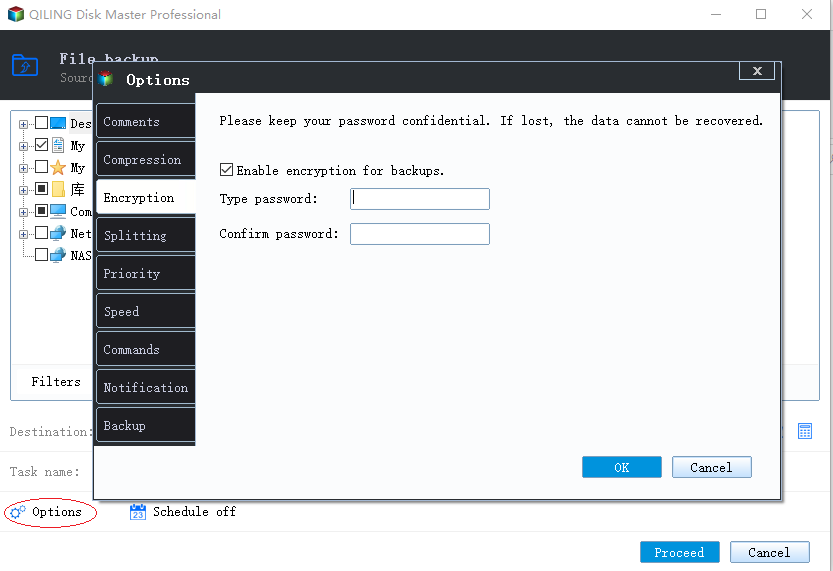
Customize an advanced and automatic backup task here:
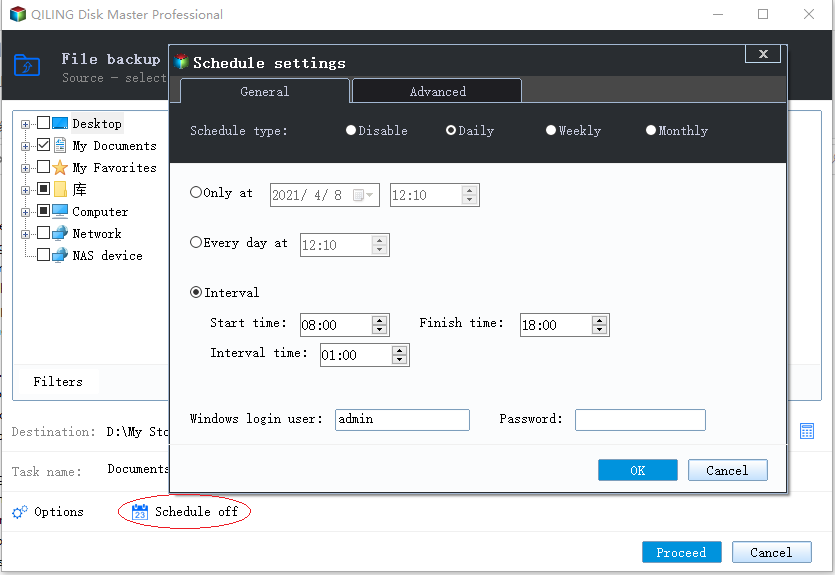
Step 6. Click "Proceed" to start the file backup process. Your completed backup files are visible on the left area in a card style.
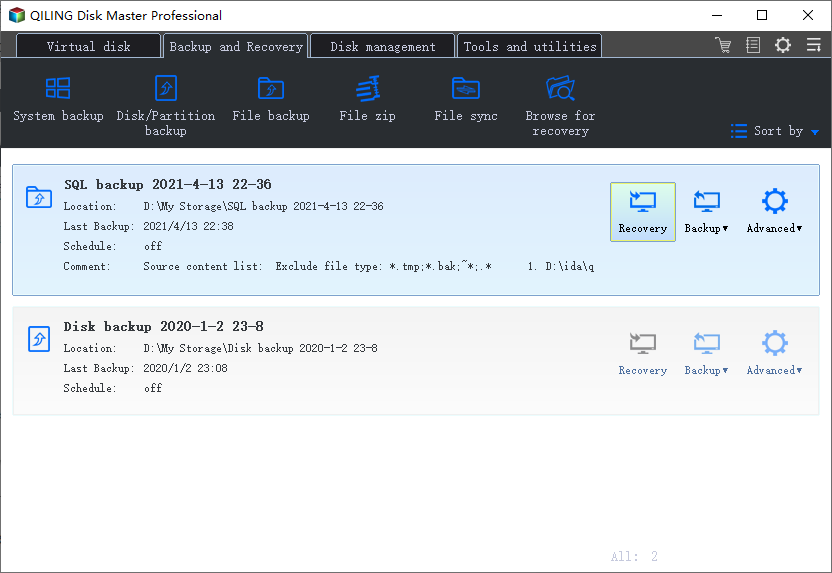
After this process, you can back up files with Qiling Backup Home. Let's see more features of it in the next paragraph.
What Can Qiling Backup Home Do?
Besides backing up files, Qiling Backup Home has many other functions. There is a list to show you its specific features:
- Scheduled and automatic backup
- Multi-path storage
- Disk and system clone
- Folder, partition, system, and disk backup
- Automatic and scheduled backups are available
- Backup an external hard drive to another external hard drive
You see! Qiling Backup Home is multifunctional. But what makes it different from File History? Continue reading.
What Makes Qiling Backup Home Different from File History?
Both Qiling Backup Home and File History can back up files, but what is their difference? There is a table to help you understand their difference.
| Features | Qiling Backup Home | File History |
|---|---|---|
| Backup Speed |
|
|
| Space Occupied |
|
|
| Backup Content |
|
|
| Backup Destination |
|
|
From the table, we can learn that Qiling Backup Home is a processional backup utility. It can replace File History and performs safer backups. Next, we are going to learn the difference between File History and Backup and Restore. Continue to read if you have similar doubts.
Bonus Tip: Windows 10 File History VS Windows 10 Backup and Restore, Which One Is Better?
In Windows 10, there is also the other backup program, Backup and Restore. Do you know the specific difference between them? This table may help.
| Features | Backup and Restore | File History |
|---|---|---|
| Backup Content |
|
|
| Backup Destination |
|
|
After reading this table, I believe you can better understand the two backup programs in Windows 10.
It is vital to know how to back up and restore data in modern society. This page gives detailed guides on how to perform Windows 10 File History backups and how to restore the backups. Besides, it also introduces a reliable backup tool, Qiling Backup Home. So, if you are facing tiring backup schedules, just download it and have a try.
FAQS About Windows 10 File History Backup
You can know three questions related to Windows 10 File History backup in this part. If you are interested, just continue to read.
1. Can I restore backups to a new PC with File History?
No, File History temperately does not allow users directly restore files to a new PC. But you can restore backups to an external hard drive or a network drive.
2. How often does File History backup by default?
By default, File History backs up hourly, but users can configure backups to occur as frequently as every 10 minutes or once daily based on their needs.
3. Does Windows 10 File History backup subfolders?
Sure, File History can back up all the files saved on user folders and other files in subfolders.
Related Articles
- Fix WD External Hard Drive Not Showing Up/Recognized Error [2022 Tutorial]
- External Hard Drive Takes Forever to Load
- Steam Deck SD Card Format | What's It & How to Format [Ultimate Solution]
- How to Reset NVRAM/PRAM on Your MacBook Pro/Air [2022 Fresh Guide]